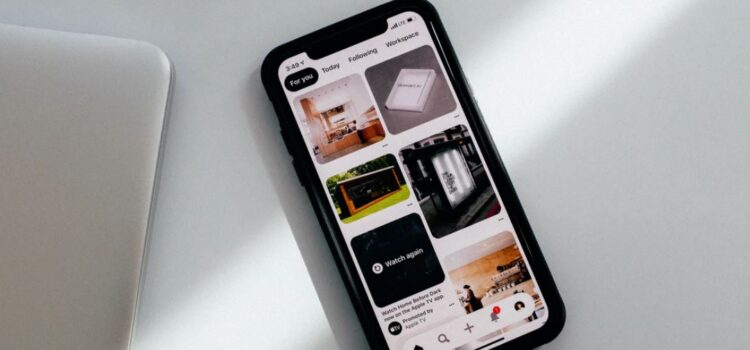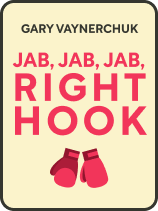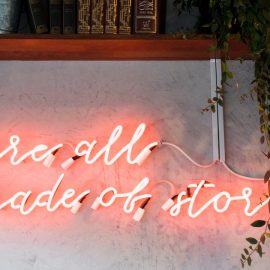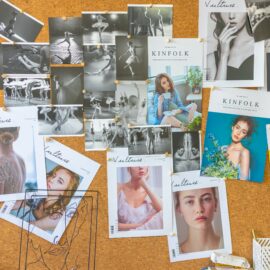

This article is an excerpt from the Shortform book guide to "Jab, Jab, Jab, Right Hook" by Gary Vaynerchuk. Shortform has the world's best summaries and analyses of books you should be reading.
Like this article? Sign up for a free trial here .
Do you want to know how to sell on Pinterest? How is marketing on Pinterest different from many other social media platforms?
Users like Pinterest because it is aspirational and purchase-friendly. Studies found that users are almost 80% more likely to buy something you sell on Pinterest than Facebook.
Keep reading for tips on how to sell on Pinterest.
How to Sell on Pinterest
Note: The information in this article is from the book Jab, Jab, Jab, Right Hook by Gary Vaynerchuk. The book was published in 2013 and some statistics and information may be out of date but the advice is still valuable.
Unlike Twitter and Facebook, Pinterest is a very visual platform. Pinterest is a social bookmarking site that allows people to save images they like, and ideas associated with the images, into collections. Posts are called “pins” and collections are “boards.” Every brand should sell on Pinterest, even if your product isn’t particularly image-worthy.
The audience: By 2013, Pinterest had 48.7 million users. While it’s only slightly less popular than Twitter, marketers have been reluctant to get on it for two reasons:
- They’re already busy with other social media sites to sell on Pinterest.
- It encourages you to share images you don’t own, which people initially thought might create copyright infringement. Pinterest has since revised its terms and put in business features to make it more attractive, and no one has ever been sued.
Who uses it: The majority of Pinterest users are women. Many parents use Pinterest—half of Pinterest users have children.
Why they use it: Pinterest was initially used to share fashion, food, and home decor ideas, but now people use it to share all sorts of hobbies. People like Pinterest because it’s aspirational—people pin images of what they’d like their lives to look like, not actually what they are.
Notable Features
Pinterest has several features that distinguish it from other social media platforms:
Feature #1: Purchase-friendly. A Steelhouse study found that users are almost 80% more likely to buy something you sell on Pinterest than Facebook. Twitter produces only a quarter of the revenue-per-click of Pinterest.
Feature #2: Distinction between boards and brand pages. People can follow your collections separately from your brand, so you have more freedom to explore your brand’s identity.
For example, if you’re a coffee company, you could create boards directly related to your product (for example, boards for Dark Roast, Decaf, and so on), tangentially related (for example, a board for coffee date outfits), or not at all related (for example, movies and books).
Feature #3: Support for comments. Comments are a new Pinterest feature that not many people are taking advantage of yet (as of 2013), so if you start using them, you’ll stand out. Like you would on Twitter, talk to people about their interests. Whenever you engage, you encourage people to look at your brand page to learn about you.
Feature #4: Support for captions. You can accompany all your images with custom captions or descriptions.
- For example, if you sell coffee and you caption a photo “Morning-after coffee saves the day again,” the caption might encourage people to comment on what they got up to on Friday night. This will encourage people to repin your posts onto their own boards, where more people will see them.
Feature #5: Repinning functionality. Like Twitter, you can reuse and upcycle other people’s content. This might not help you sell on Pinterest, but it’s good for building relationships and establishing trust.
- For example, a coffee company might create a board called “Coffee Accessories” and repin a photo of a coffee pot with a short review of it.
Feature #6: Rabbitholing opportunities. Most people on Pinterest don’t go directly to a brand’s page; they arrive there by clicking on images they’re interested in that eventually lead to the page. People have the potential to end up on your brand page no matter what board they initially started at.

———End of Preview———
Like what you just read? Read the rest of the world's best book summary and analysis of Gary Vaynerchuk's "Jab, Jab, Jab, Right Hook" at Shortform .
Here's what you'll find in our full Jab, Jab, Jab, Right Hook summary :
- Why creating strong social media content is like boxing
- How the rise of social media has brought many changes to marketing
- How to build a connection and then convert a sale






